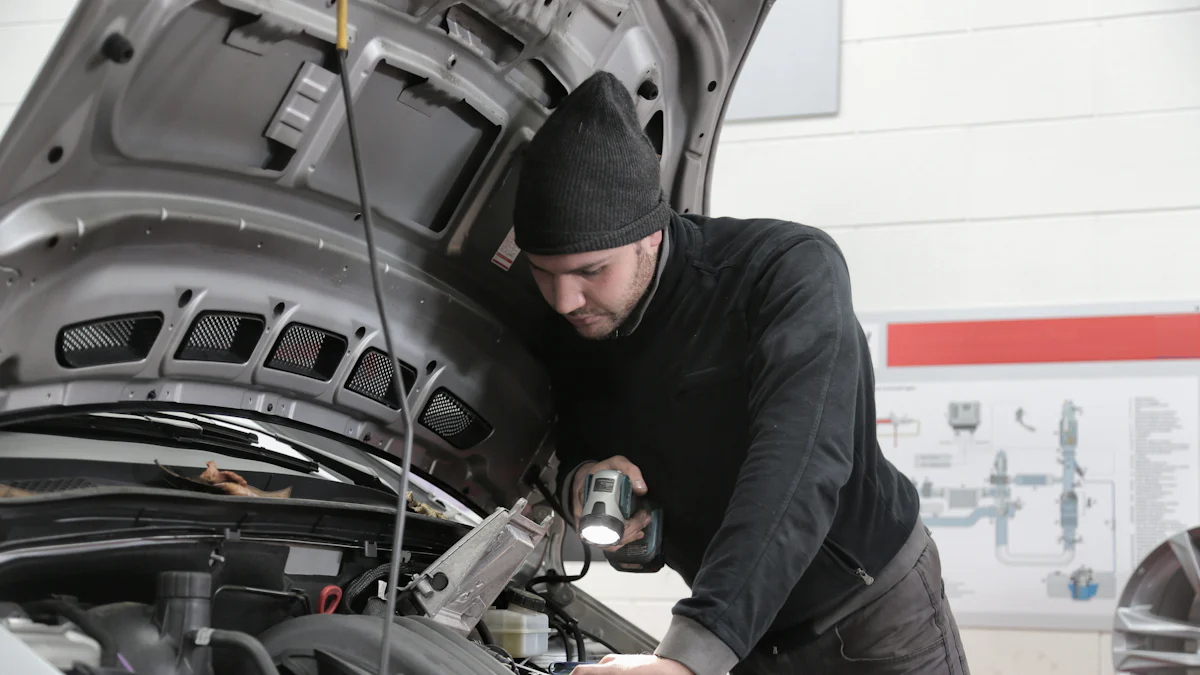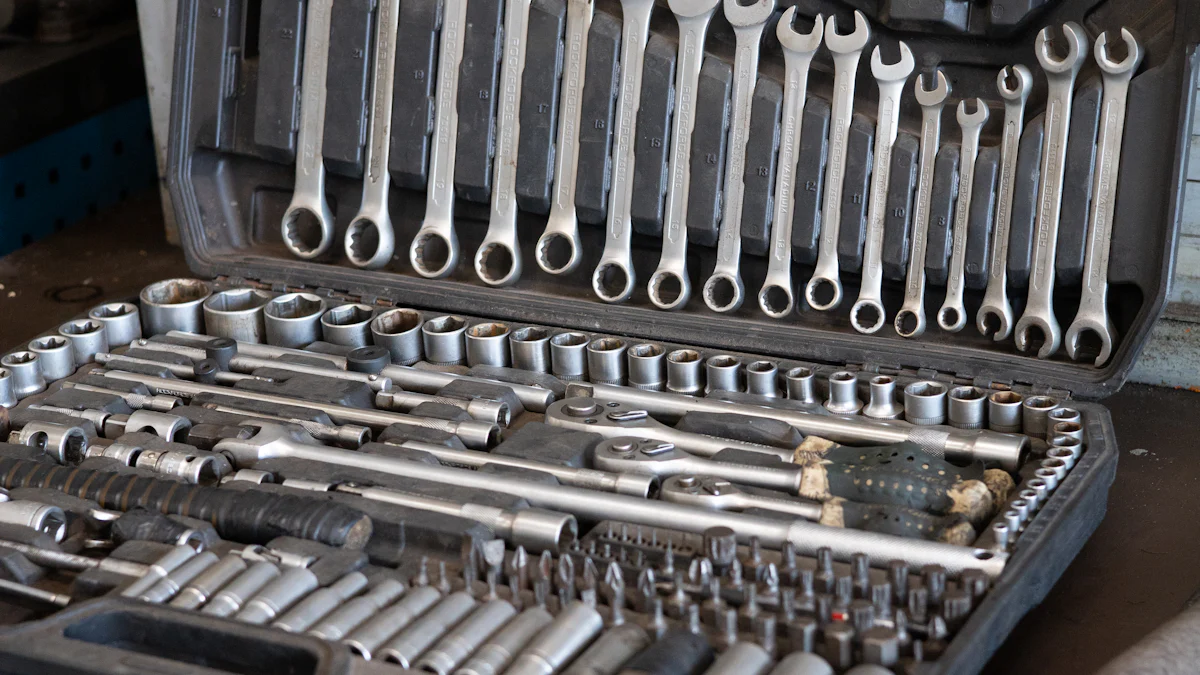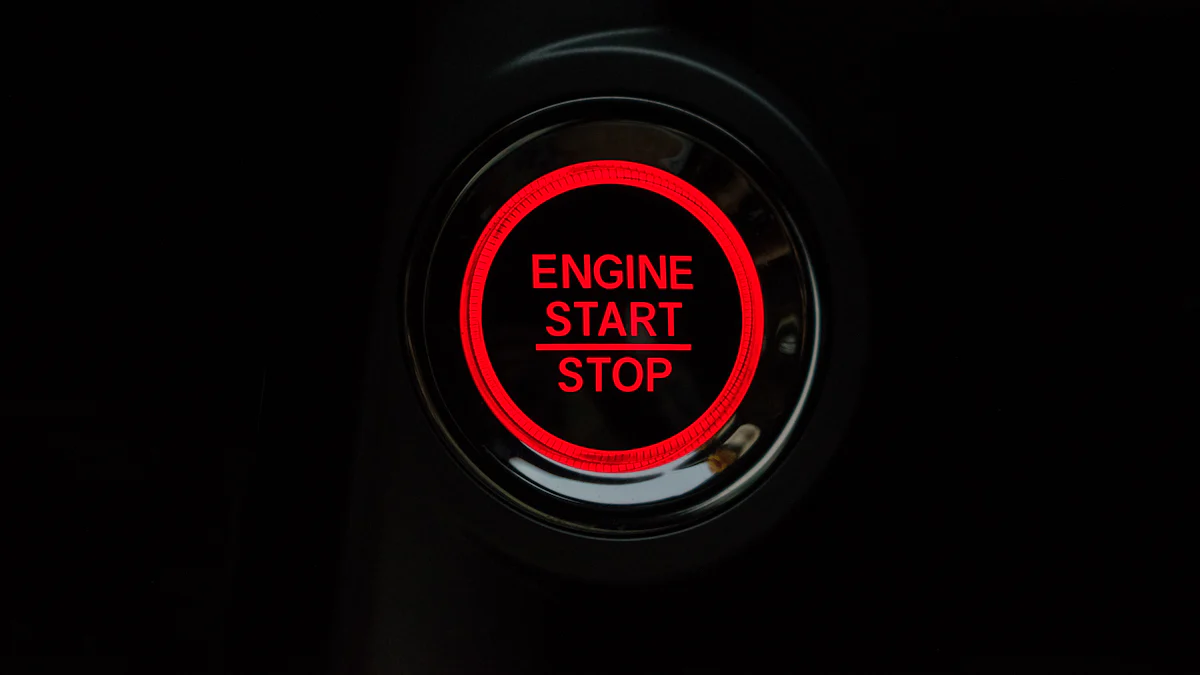
The removal of a harmonic balancer is a crucial task in maintaining your vehicle’s optimal condition. Extracting a harmonic balancer without the proper tools poses challenges, but with persistence and the right technique, it can be achieved. The process involves stopping the engine from turning to ensure a smooth removal. Understanding how to stop the engine from turning when removing the harmonic balancer is essential for every vehicle owner or mechanic. Throughout this guide, we will explore effective methods to overcome this challenge and safely remove the harmonic balancer.
Tools Needed
Basic Tools
Wrenches
When working on removing the harmonic balancer, wrenches are essential tools that come in various sizes to fit different bolts and nuts. They provide the necessary torque to loosen or tighten fasteners securely. Ensure you have a set of wrenches available, including both open-end and box-end types for versatility.
Screwdrivers
Screwdrivers play a crucial role in various automotive tasks, including removing screws, prying components apart, or positioning parts during assembly. Having a selection of flathead and Phillips head screwdrivers ensures you can tackle different types of fasteners with ease.
Specialized Tools
Harmonic Balancer Puller
For efficient removal of the harmonic balancer, consider using a Harmonic Balancer Puller tool. This specialized tool is designed specifically for this task, allowing you to safely extract the balancer without causing damage to surrounding components. The OEM 27019 Harmonic Balancer Removal Tool is a popular choice available at auto parts stores for purchase or rental.
Flywheel Lock
When working on stopping the engine turn to remove the harmonic balancer, a Flywheel Lock can be invaluable. This tool helps secure the flywheel in place, preventing it from rotating while you work on the balancer. It ensures stability and safety during the removal process.
Impact Gun
An Impact Gun is a powerful tool that can assist in stopping the engine turn effectively. With its high torque output, an impact gun can quickly loosen stubborn bolts or nuts, making it easier to remove components like the harmonic balancer. Consider investing in a reliable impact gun for smoother maintenance tasks.
Utilizing these basic and specialized tools will equip you with everything needed to tackle the challenge of removing the harmonic balancer efficiently and safely. Remember to follow proper safety precautions and choose the right tool for each step of the process to ensure successful completion of your maintenance tasks.
Preparation Steps
Safety Precautions
Disconnect Battery
- Start by disconnecting the battery to ensure safety during the harmonic balancer removal process.
- This step is crucial as it prevents any electrical mishaps and ensures a secure working environment.
- Remember, safety should always be the top priority when working on any vehicle maintenance task.
Wear Safety Gear
- Prioritize your safety by wearing appropriate safety gear before starting the removal procedure.
- Safety gear such as gloves, goggles, and protective clothing can shield you from potential injuries.
- Ensuring you are properly equipped with safety gear will minimize risks and enhance your focus on the task at hand.
Vehicle Setup
Lift Vehicle
- Elevate the vehicle using a suitable lifting mechanism to gain access to the harmonic balancer area.
- Lifting the vehicle provides ample space for maneuvering and performing the necessary steps comfortably.
- Always follow proper lifting procedures to prevent accidents and ensure a stable working platform.
Secure Vehicle
- Secure the lifted vehicle in place using reliable support stands or wheel chocks to prevent any movement.
- This step is essential for maintaining stability while working underneath the vehicle.
- Securing the vehicle adds an extra layer of safety and allows you to focus on the harmonic balancer removal process effectively.
By following these preparation steps diligently, you set a solid foundation for a successful harmonic balancer removal procedure. Remember, taking precautionary measures and ensuring proper setup are key elements in achieving a smooth and safe maintenance experience for both novices and experienced mechanics alike.
Methods to Stop Engine Turn
Using an Impact Gun
Steps to Use
- Align the impact gun with the fastener on the harmonic balancer.
- Apply pressure in a clockwise direction to loosen the bolt securely.
- Ensure a firm grip on the gun to maintain control and prevent slippage.
- Gradually increase the torque until the bolt is completely loosened.
Advantages
- Swiftly removes stubborn bolts without excessive effort.
- Provides precise control over torque application for efficient removal.
- Minimizes physical strain on the user during the harmonic balancer extraction process.
Using a Flywheel Lock
Steps to Use
- Position the flywheel lock against the flywheel teeth securely.
- Engage the lock mechanism to prevent any rotational movement of the flywheel.
- Verify that the lock is firmly in place before proceeding with balancer removal.
- Double-check alignment to ensure proper immobilization of the flywheel.
Advantages
- Maintains stability by preventing unintended rotation of critical engine components.
- Facilitates a safe working environment by securing essential parts in place.
- Enhances precision during harmonic balancer removal for accurate maintenance tasks.
Using the Rope Trick
Steps to Use
- Insert a sturdy rope into one of the cylinder spark plug holes carefully.
- Rotate the crankshaft manually until resistance is felt from piston compression against the rope.
- The jammed rope effectively stops engine turn, allowing for balancer removal safely.
- Confirm that the rope is tightly wedged to prevent any further engine rotation.
Advantages
- Offers a cost-effective solution for enthusiasts or mechanics without specialized tools.
- Safely immobilizes engine components, ensuring efficient harmonic balancer extraction.
- Simple yet effective method that can be easily implemented with minimal resources available.
By utilizing these methods effectively, individuals can overcome challenges associated with stopping engine turn during harmonic balancer removal, leading to successful maintenance outcomes and enhanced vehicle performance. Remember, selecting the appropriate technique based on your specific requirements and available tools is crucial for achieving optimal results in your maintenance endeavors.
Using a Chain Wrench
When employing a Chain Wrench for stopping the engine turn during harmonic balancer removal, certain steps should be followed to ensure a smooth process. By understanding the advantages of this method, individuals can effectively tackle this task without complications.
Steps to Use
- Position the chain wrench securely around the crank pulley or harmonic balancer.
- Tighten the chain wrench by adjusting its grip on the pulley for a firm hold.
- Ensure that the chain is securely wrapped around the pulley to prevent slippage.
- Apply steady pressure in the opposite direction of rotation to counteract engine turn effectively.
Advantages
- Provides a versatile solution for immobilizing the crankshaft during maintenance tasks.
- Offers a secure grip on the pulley, minimizing the risk of slippage or movement.
- Facilitates precise control over stopping engine turn, enhancing safety and efficiency.
- Enables individuals to work confidently on removing the harmonic balancer without disruptions.
Using a Breaker Bar
Utilizing a Breaker Bar is another effective method to halt engine rotation when dealing with harmonic balancer removal. By following specific steps and understanding its advantages, individuals can successfully overcome challenges associated with this task.
Steps to Use
- Insert the breaker bar into the designated bolt or nut securing the harmonic balancer.
- Apply gradual force in a counterclockwise direction to prevent engine turn effectively.
- Maintain a stable grip on the breaker bar while exerting pressure to loosen the fastener securely.
- Utilize leverage provided by the breaker bar for efficient removal of components without excessive effort.
Advantages
- Offers increased torque compared to traditional hand tools, making it ideal for stubborn fasteners.
- Provides enhanced control over loosening bolts or nuts, ensuring precision during maintenance tasks.
- Minimizes physical strain on individuals by utilizing leverage for smoother operation.
- Facilitates quick and efficient removal of components, optimizing workflow and productivity.
How to Stop Engine Turn When Removing Harmonic Balancer
To effectively stop engine turn when removing the harmonic balancer, it is essential to summarize available methods and choose the most suitable approach based on individual preferences and tool availability.
Summary of Methods
Various techniques such as using an impact gun, flywheel lock, rope trick, chain wrench, and breaker bar offer solutions for immobilizing engine components during maintenance tasks. Each method presents unique advantages tailored to different skill levels and equipment accessibility.
Choosing The Best Method
When selecting an appropriate method to stop engine turn during harmonic balancer removal, consider factors such as tool availability, personal comfort level with each technique, and desired efficiency in completing the task. Evaluate each method’s advantages and choose one that aligns best with your specific requirements for successful maintenance outcomes.
View Public Profile Find
When seeking additional guidance or exploring further information on harmonic balancer removal and engine maintenance, Werkwell offers a valuable resource through its View Public Profile feature. This feature allows users to access a wealth of knowledge shared by automotive experts and enthusiasts, providing insights into best practices, troubleshooting tips, and innovative techniques for efficient maintenance tasks.
Additional Resources
- Online Forums: Engage with a community of like-minded individuals passionate about automotive care. Share experiences, seek advice, and contribute to discussions on harmonic balancer removal methods.
- Video Tutorials: Visual learners can benefit from step-by-step video tutorials demonstrating various engine turn stopping techniques. Watch professionals in action and gain practical insights for your next maintenance project.
- Maintenance Guides: Dive into detailed maintenance guides tailored to harmonic balancer removal procedures. Learn about the importance of using the right tools, safety precautions, and effective methods for a seamless experience.
Expert Tips
- Tool Selection: Choose the appropriate tool based on your skill level and comfort with each method. Consider factors such as tool availability, ease of use, and efficiency when selecting the best approach for stopping engine turn during harmonic balancer removal.
- Safety First: Prioritize safety by following recommended safety precautions throughout the maintenance process. Ensure you disconnect the battery, wear protective gear, and secure the vehicle properly before initiating any work on the harmonic balancer.
- Precision Matters: Focus on precision when implementing engine turn stopping methods to avoid damage to critical components. Take your time to align tools correctly, apply consistent pressure, and double-check immobilization mechanisms for optimal results.
By leveraging these additional resources and expert tips provided by Werkwell’s View Public Profile feature, individuals can enhance their knowledge base, refine their skills in harmonic balancer removal techniques, and elevate their overall maintenance proficiency for a smoother automotive care experience.
- Summarize the diverse methods available to halt engine turn effectively during harmonic balancer removal, including using an impact gun, flywheel lock, rope trick, chain wrench, and breaker bar.
- Emphasize the significance of employing the correct tools and techniques tailored to individual requirements for successful maintenance outcomes.
- Advocate for prioritizing safety precautions throughout the removal process to ensure a secure working environment and minimize risks.
- Invite readers to delve deeper into additional resources provided by Werkwell or reach out for inquiries, enhancing their knowledge base and expertise in harmonic balancer removal techniques.
Post time: May-28-2024





